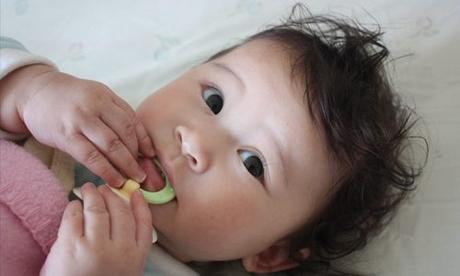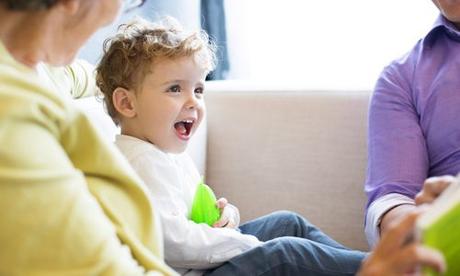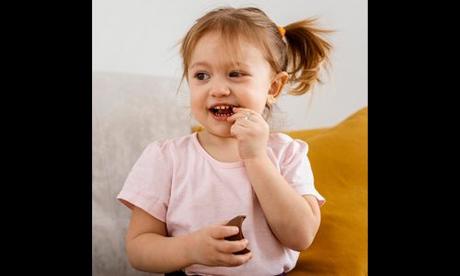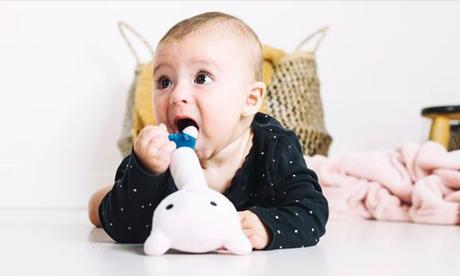Imagine this: you're at a family gathering, chatting happily when suddenly, you hear a cry. You turn around to see your toddler, teeth sunk into a cousin's arm, leaving both children in tears and everyone around in shock. This scenario, though unsettling, is a common experience many parents face. Child biting is a phase that can surface unexpectedly, often leaving parents feeling embarrassed or worried. But biting is a normal and frustrating behavior in young children. Understanding why it happens and how to respond can help you navigate this challenging phase with patience and empathy.
What Is Child Biting?

Child biting is when toddlers, usually between the ages of 1 and 3, bite others, including caregivers, other children, or even themselves. It's more common than you might think and can be a natural part of their development. Biting, in most cases, is a form of communication-an expression of frustration, excitement, or even curiosity.
Why Do Toddlers Bite?
Biting is a common behavior among toddlers that can leave parents feeling confused and concerned. Understanding the reasons behind this action can help caregivers address it effectively and supportively.
Communication

Toddlers lack the language skills to express their emotions fully. When they feel overwhelmed, tired, or frustrated, they may bite as a way to communicate those feelings.
Teething Pain

When those little teeth are coming in, your toddler might seek relief by biting anything within reach. Their gums are irritated , and biting down can feel soothing to them.
Exploration
use all their senses to explore the environment, including taste. Sometimes, they bite just to see what happens-whether out of curiosity or to gauge others' reactions.
Frustration or Anger

If your child is upset or doesn't know how to handle emotions like anger, biting can become an impulsive way to release that frustration.
How to Stop Toddlers from Biting?
The million-dollar question! Stopping a toddler from biting takes patience, consistency, and calmness. Here are some effective strategies,
Stay Calm and Respond Firmly

When your child bites, it's important to remain calm and not overreact. Firmly say, "No biting. Biting hurts," and move them away from the situation. This helps them understand that biting is unacceptable behavior without creating fear or confusion.
Teach Alternative Communication

Help your child find words or gestures to express their emotions . For example, if they are frustrated, teach them to say "I'm mad" or "I need help" rather than biting.
Provide Teething Relief

If teething is the issue, offer safe teething toys or cold-wash clothes to chew on. This can soothe their gums and reduce the urge to bite people.
Positive Reinforcement
Praise your child when they use their words instead of biting. Positive reinforcement goes a long way in helping them adopt more appropriate behaviors.
How to Get a 1-Year-Old to Stop Biting?
Dealing with a 1-year-old biter requires a bit more patience since they're still very limited in their communication skills. Learning effective strategies to address this behavior is essential for fostering a safe and nurturing environment.
Distract and Redirect
If you see your toddler getting upset or overwhelmed, try to shift their focus to a toy or a different activity before they start biting. Distracting them can help prevent this behavior.
Teach Gentle Touch
Encourage your toddler to use their hands for soft touches. Gently guide their hands and say, "We use gentle hands with our friends."
How to React When a Child Bites?
Your reaction when a child bites is crucial. The goal is to teach them that biting is unacceptable without making them feel ashamed or scared.
Offer Comfort to the Victim

It's important to comfort the person who was bitten, especially if it was another child. This shows your child that biting can hurt others and is not the right way to handle emotions.
Consistency Is Key

Be consistent with your response each time biting happens. This helps reinforce the message that biting is never okay.
Teach Empathy

Help your child understand the impact of their actions. Say things like, "See, biting made your friend sad," to encourage them to think about how their behavior affects others. Teaching empathy early helps reduce aggressive behavior like biting.
Model Appropriate Behavior

Show your child how to react in stressful situations without biting. If they are frustrated or angry, demonstrate using calm words or actions, and encourage them to do the same. Modeling these behaviors will help them understand better alternatives.
Separate the Child Temporarily

If the biting continues, consider temporarily removing the child from the situation. A brief "time-out" in a calm, neutral space can give them a chance to settle down. This break allows them to process that biting leads to a change in activity and isn't acceptable.
Is Biting a Sign of Teething?

Yes, biting is often a sign of teething in babies and toddlers . As new teeth push through the gums, this can cause discomfort and irritation. Biting down on objects, toys, or even people can help soothe the sore gums. The pressure provides temporary relief from the discomfort, which is why teething children may bite more frequently during this phase.
If you suspect teething is the cause of your child's biting, try offering teething toys, cold washcloths, or safe teething rings to alleviate the pain. Gum massages can also be beneficial.
By providing these alternatives, you can reduce their urge to bite others. Keep an eye on common teething symptoms like drooling, fussiness, or chewing on hands, which can accompany biting during teething periods.
Managing teething discomfort with appropriate remedies can help prevent biting incidents and comfort your child during this developmental stage.
Fun and Engaging Activities for Toddlers
Teaching toddlers gentle behavior can be fun and engaging through play. Here are some interactive activities that not only teach gentle touch but also help develop empathy and understanding of others' feelings.
1. "Pat the Bunny" Game
Toddlers love to interact with soft, cuddly toys, and this game takes advantage of that curiosity.
Choose a soft toy, like a bunny or stuffed animal, and demonstrate how to gently pat or stroke the toy. You can say, "Let's pat the bunny with our gentle hands," to reinforce the action. Encourage your child to do the same, and praise them when they touch softly.
Why It Works
This game connects the concept of gentle touch with a soothing, comforting activity. It helps your toddler practice self-control while learning to be caring toward others, starting with toys.
2. Role Play with Dolls or Stuffed Animals
Role-playing games are a fun way to teach empathy and kindness.
Pretend you and your child are taking care of a doll or stuffed animal. You can take turns dressing, feeding, or putting the toy to bed. Encourage your child to be gentle with the doll by softly brushing its hair or giving it a "hug" while saying, "We treat our friends gently."
Why It Works
This activity lets toddlers practice nurturing behaviors. Through role-play, they begin to understand how to handle people, animals, or objects with care, which reinforces the concept of being gentle.
By making gentle behavior a part of playtime, toddlers can practice important life skills in a relaxed, enjoyable way. These activities not only reinforce positive actions but also provide opportunities to bond and share important lessons on kindness and empathy.
Biting is a normal phase for many toddlers, and while it can be tough, it's part of their development. By staying calm, setting clear rules, and encouraging gentle behavior, you can help your child outgrow this habit. With patience and love, your toddler will soon learn better ways to communicate.

Iris is a health writer at Completehealthnews.com. She has completed her Masters in Nutrition and Health and wants to share her knowledge with the world through her blogs. Her blogs emphasize on the importance of tracking one's health and seeking a physician when required. Check out Iris's posts for health tips and suggestions.

